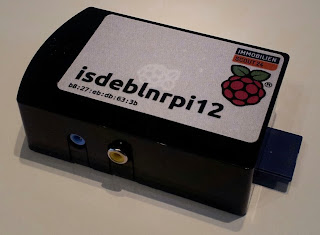Automated Raspbian Setup for Raspberry Pi

Update (2019): https://github.com/schlomo/rpi-image-creator is the new home of the code. Recently we got a whole bunch of Raspberry Pi systems at work - the cheapest platform for building Dashboards . Everybody loves those little cute boxes - but nobody wants to deal with the setup and maintenance. The kiosk-browser package is of course also the base of our Pi-based setup. But how does it get onto the Pi? The solution is a Bash script: rpi-image-creator available on the ImmobilienScout24 GitHub project . It automates the setup of a Pi with Raspbian by downloading a Raspbian image, customizing it a bit and writing it to a SD card. The reason to write my own script where the following features: It creates the file systems on the SD card instead of dumping a raw image onto the SD card. That way the partitions are all aligned properly and have the right size from the beginning. No later resizing needed It removes all the stuff that Raspbian runs at the first boot so that the